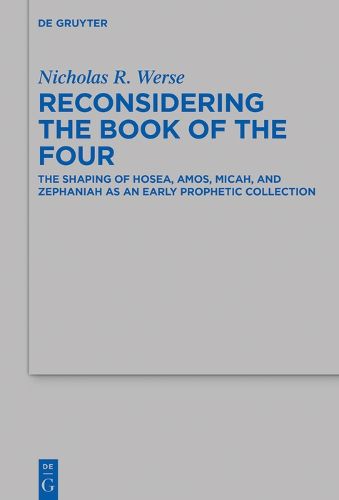Readings Newsletter
Become a Readings Member to make your shopping experience even easier.
Sign in or sign up for free!
You’re not far away from qualifying for FREE standard shipping within Australia
You’ve qualified for FREE standard shipping within Australia
The cart is loading…






This title is printed to order. This book may have been self-published. If so, we cannot guarantee the quality of the content. In the main most books will have gone through the editing process however some may not. We therefore suggest that you be aware of this before ordering this book. If in doubt check either the author or publisher’s details as we are unable to accept any returns unless they are faulty. Please contact us if you have any questions.
Although many scholars recognize literary similarities between Hosea, Amos, Micah, and Zephaniah, defining the compositional relationship between these texts remains a matter of debate. Following the scholarly trajectory of exploring the compositional relationship between the Twelve prophets, several scholars argue that these four prophetic texts formed a precursory collection to the Book of the Twelve. Yet even among advocates for this ‘Book of the Four’ there remain differences in defining the form and function of the collection. By reexamining the literary parallels between these texts, Werse shows how different methodological convictions have led to the diverse composition models in the field today. Through careful consideration of emerging insights in the study of deuteronomism and scribalism, Werse provides an innovative composition model explaining how these four texts came to function as a collection in the wake of the traumatic destruction of Jerusalem. This volume explores a historic function of these prophetic voices by examining the editorial process that drew them together.
$9.00 standard shipping within Australia
FREE standard shipping within Australia for orders over $100.00
Express & International shipping calculated at checkout
This title is printed to order. This book may have been self-published. If so, we cannot guarantee the quality of the content. In the main most books will have gone through the editing process however some may not. We therefore suggest that you be aware of this before ordering this book. If in doubt check either the author or publisher’s details as we are unable to accept any returns unless they are faulty. Please contact us if you have any questions.
Although many scholars recognize literary similarities between Hosea, Amos, Micah, and Zephaniah, defining the compositional relationship between these texts remains a matter of debate. Following the scholarly trajectory of exploring the compositional relationship between the Twelve prophets, several scholars argue that these four prophetic texts formed a precursory collection to the Book of the Twelve. Yet even among advocates for this ‘Book of the Four’ there remain differences in defining the form and function of the collection. By reexamining the literary parallels between these texts, Werse shows how different methodological convictions have led to the diverse composition models in the field today. Through careful consideration of emerging insights in the study of deuteronomism and scribalism, Werse provides an innovative composition model explaining how these four texts came to function as a collection in the wake of the traumatic destruction of Jerusalem. This volume explores a historic function of these prophetic voices by examining the editorial process that drew them together.